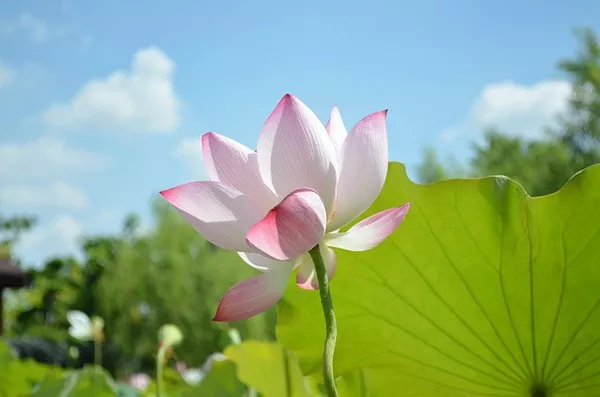Flowers have long been cherished for their beauty, fragrance, and symbolic significance across cultures and civilizations. Among the myriad meanings attributed to flowers, one of the most profound is their representation of rebirth. In various traditions and mythologies, certain flowers have been designated as powerful symbols of renewal, growth, and the cyclical nature of life. This article delves into the captivating world of flowers and unveils the profound symbolism behind those that embody the concept of rebirth.
The Lotus: An Ancient Emblem of Resurgence
In the tapestry of symbolic flowers, the lotus holds an esteemed position as an emblem of rebirth and spiritual awakening. Revered in Eastern cultures, particularly in Hinduism and Buddhism, the lotus emerges from muddy waters to blossom into a pristine and exquisite flower. This metamorphosis mirrors the journey of the soul, ascending from the murkiness of life’s challenges to attain purity and enlightenment.
The lotus is not merely a visually striking flower but carries profound philosophical connotations. Its ability to thrive in adverse conditions signifies resilience and the transformative power embedded in the process of rebirth. As the lotus rises above the water’s surface, it epitomizes the human spirit’s capacity to transcend difficulties and emerge stronger, wiser, and more beautiful.
The Phoenix Flower: A Mythical Resurgence
While not a botanical reality, the concept of the Phoenix flower is deeply rooted in mythology and symbolism. In ancient Greek and Egyptian mythology, the Phoenix is a mythical bird that cyclically regenerates or is reborn from its ashes. Though the Phoenix flower may not exist in the natural world, the mythical bird’s symbolism is often associated with various flowers that represent the cyclical nature of life, death, and rebirth.
The Phoenix flower symbolizes the inherent beauty in renewal, illustrating that even from the ashes of the past, new life and vibrancy can emerge. This powerful metaphor resonates across cultures, inspiring individuals to embrace change, learn from past experiences, and welcome the prospect of a brighter future.
The Cherry Blossom: A Fleeting Beauty with Profound Significance
In Japanese culture, the cherry blossom, or sakura, is a revered symbol of transience and the transient nature of life. Each spring, these delicate pink and white flowers blanket the landscape, creating a breathtaking spectacle that lasts only for a brief period. The ephemeral beauty of cherry blossoms serves as a poignant reminder of the fleeting nature of existence and the constant cycle of life, death, and rebirth.
The cherry blossom’s symbolism is deeply ingrained in Japanese philosophy, particularly the concept of mono no aware, which translates to “the beauty of transience.” Embracing the cherry blossom’s fleeting bloom, individuals are encouraged to appreciate the present moment, recognizing that life, like the blossoms, is a transient and ever-changing phenomenon.
The Daffodil: A Beacon of Hope and Renewal
In Western traditions, the daffodil is often associated with spring and the renewal of life. With its vibrant yellow hues and trumpet-shaped blooms, the daffodil emerges as a beacon of hope and optimism after the cold and dormant winter months. This flower’s arrival symbolizes the triumph of light over darkness, warmth over cold, and life over the dormancy of winter.
Daffodils are frequently used in various cultures to celebrate the arrival of spring, and their presence in gardens and landscapes heralds the renewal of nature. In literature and art, daffodils are portrayed as messengers of joy and rejuvenation, embodying the essence of rebirth as they burst forth in radiant splendor.
Conclusion
In the rich tapestry of floral symbolism, certain flowers stand out as profound representatives of rebirth. The lotus, with its transformative journey from the depths of muddy waters to the radiant surface, encapsulates the essence of spiritual renewal. The mythical Phoenix flower, though not a botanical reality, inspires awe and contemplation about the cyclical nature of life. The cherry blossom, with its transient beauty, and the daffodil, symbolizing the triumph of life over winter’s dormancy, further enrich the spectrum of flowers that embody rebirth.
As we celebrate the beauty and symbolism of these flowers, we are reminded of the universal theme of renewal that transcends cultural and geographical boundaries. Whether rooted in ancient mythology, Eastern philosophy, or Western traditions, the symbolic elegance of these flowers invites us to reflect on the perpetual cycle of life, death, and rebirth—a timeless and universal narrative that continues to captivate the human spirit. In the language of flowers, the bloom of rebirth speaks to our shared journey through the seasons of life, inviting us to embrace change,appreciate the present moment, and cultivate resilience in the face of life’s inevitable challenges.


